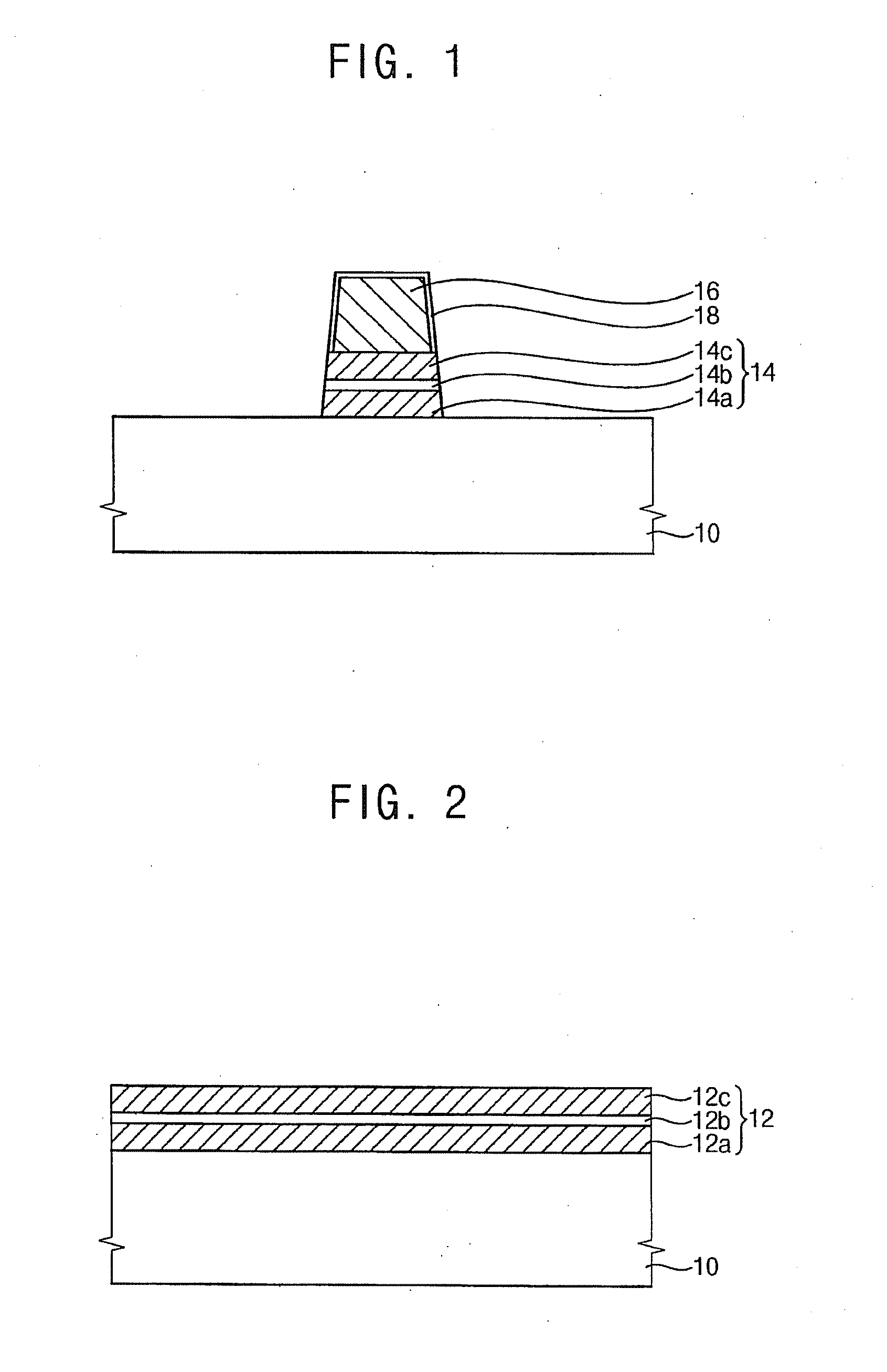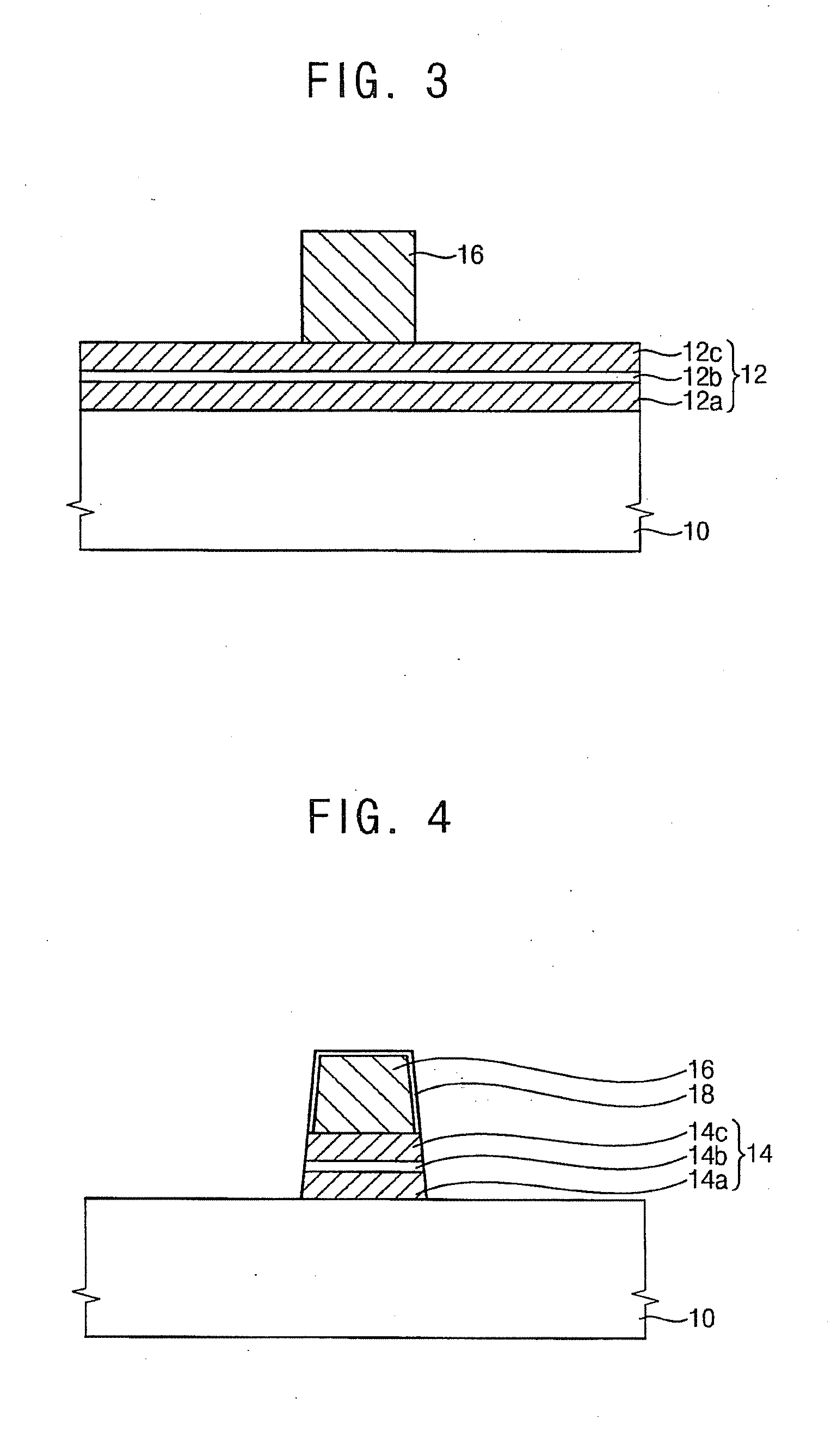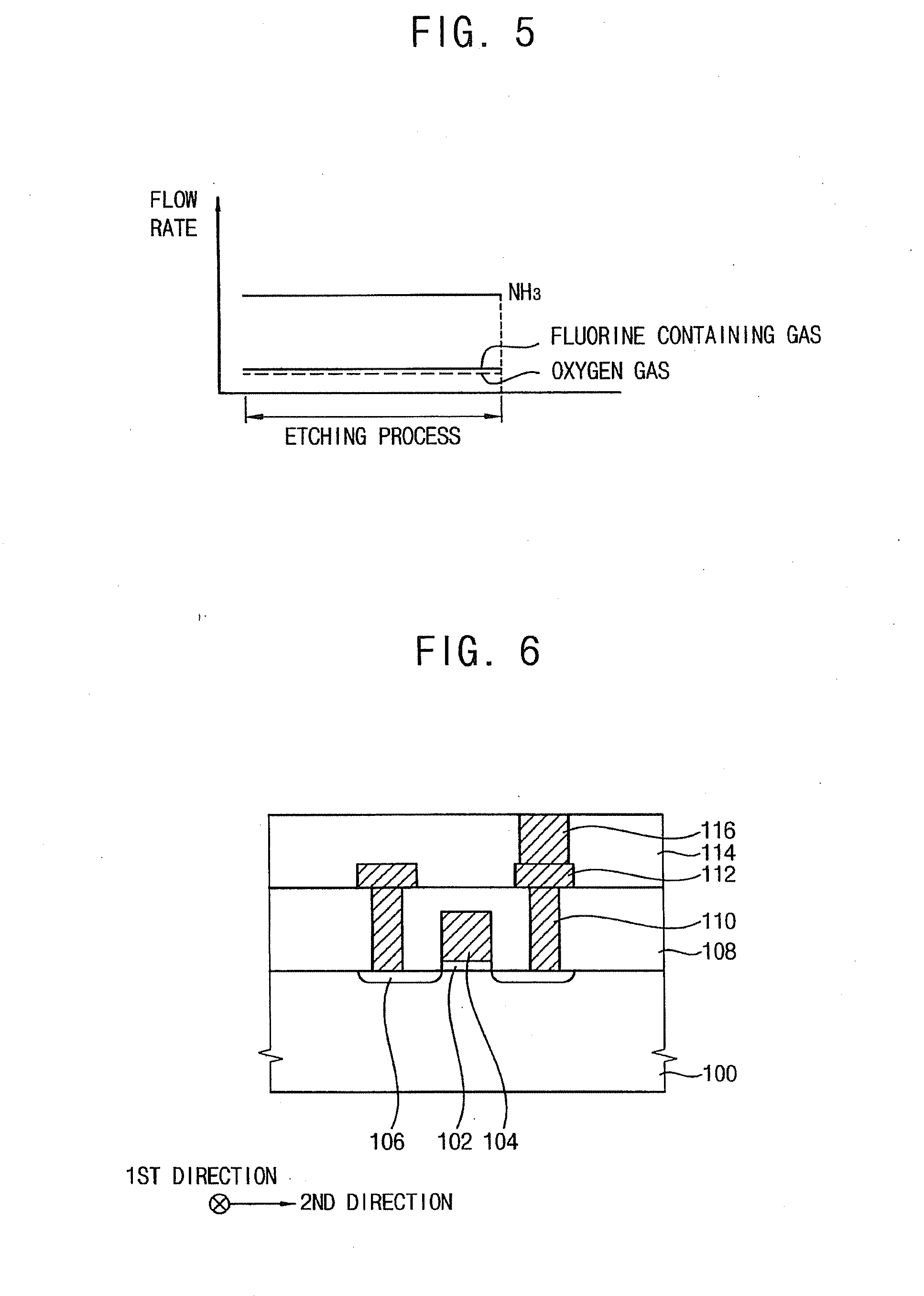Methods of forming pattern structures
a pattern structure and pattern technology, applied in the field of pattern structure, can solve the problems of low etching rate of metal, difficult formation of hard masks for etching processes having a high etching selectivity, and structures below hard masks that cannot be patterned into desirable shapes, etc., to achieve the effect of suppressing the removal of mask patterns
- Summary
- Abstract
- Description
- Claims
- Application Information
AI Technical Summary
Benefits of technology
Problems solved by technology
Method used
Image
Examples
experiment 1
on Magnetoresistance Ratio
Example 1
FIG. 17 is a cross-sectional view illustrating a MTJ structure in accordance with Example 1.
The MTJ structure was formed as follows.
Referring to FIG. 10, a MTJ material layer was formed on a substrate 10. Specifically, a first barrier layer was formed on the substrate 10 using tantalum (Ta). A fixed layer was formed on the first barrier layer using PtMn. A CoFe layer, a Ru layer and a CoFe layer were stacked sequentially on the fixed layer. A second barrier layer (i.e., a tunnel barrier layer) was formed on the CoFe layer using MgO. A free layer was formed on the tunnel barrier layer using CoFeB.
A hard mask layer including a titanium layer and titanium nitride layer. The hard mask layer was patterned to form a hard mask 16 including a titanium layer pattern and a titanium nitride layer pattern. The hard mask 16 was formed to have a line width of about 50 nm.
The MTJ material layer was etched using the hard mask as an etching mask by an etching proce...
PUM
 Login to View More
Login to View More Abstract
Description
Claims
Application Information
 Login to View More
Login to View More - R&D
- Intellectual Property
- Life Sciences
- Materials
- Tech Scout
- Unparalleled Data Quality
- Higher Quality Content
- 60% Fewer Hallucinations
Browse by: Latest US Patents, China's latest patents, Technical Efficacy Thesaurus, Application Domain, Technology Topic, Popular Technical Reports.
© 2025 PatSnap. All rights reserved.Legal|Privacy policy|Modern Slavery Act Transparency Statement|Sitemap|About US| Contact US: help@patsnap.com



